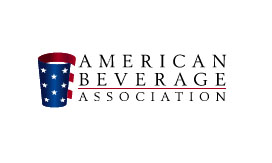Cutting Through the Clutter is Just the Beginning

Susan Neely, CAE president and CEO of the American Beverage Association and newly elected chair of the ASAE Board of Directors believes you can’t just report the news to your members; you have to analyze it quickly and concisely, explain how it impacts them and what you’re going to do about it. Since 1919, ABA has represented the non-alcoholic beverage industry, which has a direct economic impact of over $140 billion. The industry provides more than 233,000 jobs and contributes more than $765 million to charitable causes in communities across the nation.
- Listening is not only key to communicating, it’s critical to bringing people together and shaping good public policy.
- I like to hire great people who have a passion for their jobs and a bit of entrepreneurial spirit. Then I turn them loose with a big objective and as much responsibility as they can handle.
- Effective leadership is about building and supporting a great team that personifies the idea of being “better together.”
- Our members are highly sophisticated marketers. You can’t just tell them new legislation has passed. You need to analyze the bill, explain how it may impact them and what ABA is doing about it.
Association Adviser: Susan, you took a very interesting path to the helm of the ABA. Can you tell us about your background?
 Susan Neely: When I graduated from college I had dreams of being in broadcasting; I even had my audition tapes ready to go. But, I ended up on a very different path than I had expected–and I wouldn’t have it any other way. I’ve worked in two associations (including ABA), as well as in a PR firm, in Congress, a Governor’s office, the White House, and a Cabinet department (the first Department of Homeland Security to be precise). I feel privileged to have had the amazing opportunities I have had–incredible mentors, helping to develop important policies, to serve my country.
Susan Neely: When I graduated from college I had dreams of being in broadcasting; I even had my audition tapes ready to go. But, I ended up on a very different path than I had expected–and I wouldn’t have it any other way. I’ve worked in two associations (including ABA), as well as in a PR firm, in Congress, a Governor’s office, the White House, and a Cabinet department (the first Department of Homeland Security to be precise). I feel privileged to have had the amazing opportunities I have had–incredible mentors, helping to develop important policies, to serve my country.
AA: Going back to your college days, how did your journalism training end up helping you in your career?
SN: Too often today we put less emphasis on communicating. But being able to communicate is critical no matter what career path you choose. For me, having a degree in journalism helped me learn not only how to shape a story, but how to know what questions I needed to ask, and most importantly, how to listen. Listening is not only key to communicating, it’s critical to bringing people together and shaping good public policy.
AA: Speaking of communicating, for the third year in a row, our annual association communication benchmarking study found that “Information Overload/Communication Clutter” was the single greatest challenge faced by association execs.
SN: We are all overloaded with information coming from a range of sources. But, why do people or companies join associations? To be part of a group, to be “in the know,” to have an organization represent them. When we communicate with our members, it’s important that we remind them about how we serve them. For example, you can’t just tell your members that a piece of legislation has been proposed; you have to give them analysis of what that bill is, how it may impact them and the industry at-large. Most importantly you have to tell them what their association is doing about it. So we must be thoughtful and strategic when communicating to our members.
AA: How would you describe your leadership style?
SN: I like to hire great people who have a passion for their jobs and at least a bit of entrepreneurial spirit. Then I turn them loose with a big objective and as much responsibility as they can handle. For me, effective leadership is about building and supporting a great team that personifies the idea of being “better together.”
AA: Unlike many associations, ABA doesn’t seem to have many print-based or newsletter-style communication vehicles. What led to that decision?
SN: A few years ago, we stepped back from more print publications and weekly e-newsletters because we felt our members, like everyone else, were feeling overloaded. We weren’t sure that our communications were cutting through. So we made the decision to produce only one print publication per year–our annual review. We’ve found this to be a great way to communicate to our members about how we have served them over the year in terms of being their voice, both reactively and proactively.
We’ve also found the magazine to be a helpful tool in our targeted member recruitment efforts. We still have a few e-communications, such as a weekly legislative update and a quarterly PAC e-newsletter. And, we have a nightly communication so our members are aware of any key news stories or breaking studies they may see the next day–along with what ABA is doing about them. So there is still a purpose for these types of communications vehicles, but they have to be targeted to fit your members’ needs.
AA: ABA’s members tend to be very sophisticated marketers. Is there anything special you do to stay relevant with folks who are pretty plugged into the latest communication tools, trends and techniques?
SN: We are extremely fortunate to work with some of the most sophisticated communications and marketing professionals in the world. This not only keeps us at the top of our game, it provides us with great insights and expertise to call upon as we are developing new campaigns or launching a new digital platform–and we do take advantage of that.
AA: How has ABA’s communication strategy changed since we last talked two years ago?
SN: Digital and social media is critical to our work as an association. Our efforts in this space have only become more robust in the last two years. We integrate digital and social platforms into all that we do – whether it’s tweeting out our daily blog through @AmeriBev, correcting misinformation through @letsclearitup, creating a community with @CartChoice or engaging teens with @MyMixify.
AA: Does ABA have any specific strategies for engaging younger members of the beverage industry?
SN: Younger members of the industry are no different than younger congressional staff or other key external stakeholders. They want the information they need to do their jobs right at their fingertips. We have to be speedy and accurate at the same time. It’s not easy, but we’ve built up our muscles and do a very good job of maintaining the information flow.
AA: What are some of your proudest accomplishments since taking over the helm of ABA?
SN: Our industry has come together to deliver really meaningful results on a range of important initiatives during my time at the ABA – and that hasn’t been an easy thing to achieve. The credit goes to leadership at all of the companies, and we are thankful for how far they have been willing to go. From our national School Beverage Guidelines, to launching front-of-pack calorie labels, to our latest Balance Calories Initiative, we have partnered with President Clinton, First Lady Michele Obama, mayors, governors, U.S. Senators and Representatives, among others. These are significant efforts that show our industry is willing to step up and lead – and that’s why I am proud to be working in this industry.
AA: It was great running into you at the ASAE press conference in Nashville. Congrats on your new role as Chair of the ASAE Board of Directors. What will that new responsibility mean for you?
SN: I believe in the work that associations do – it is a career path that we should be encouraging more college graduates to look into. ASAE is a strong organization with a great leader in John Graham. It is forward-thinking and can effectively share how our work is about public service and how it provides a very unique way to be part of important conversations. I look forward to being part of this movement over the coming year.
AA: ABA holds an annual legislative “Fly-In” in Washington, D.C. Tell us how that event emerged, and how ABA members become involved.
SN: Our Annual Fly-In has been our marquee event for more than a decade, and we have phenomenal participation by our member companies. It is the one time of year we can come together as an industry to blanket the Hill and engage in productive conversations with our Members of Congress. We let them know both what we’re “for” and what we’re “against.” We also like to showcase our industry and its innovation with a “Beverage Bash,” knowing that people have their favorite beverages which remind them of home, their childhood, and nostalgia.
AA: Ameribev.org states that ABA members contribute more than $765 million to charitable causes in their communities. How is this money raised? How is it allocated? What are the goals of such large-scale giving?
SN: Our member companies have long supported charitable causes at the local, state and national level. ABA is not engaged in those efforts, but they do support a wide range of charitable causes and are also known for being front-footed with their support during times of natural disaster. AA: ABA has a strong history of innovation. How do you encourage your staff, volunteers and board to think outside of the box?
SN: Thinking outside the box is not only something we encourage at ABA, it is something our Board encourages us and their own teams to do as well. After all, we are an industry that is known for innovation – whether it’s our products, policies or programs.
How does your association think outside the box about your industry’s products, policies, or programs? Tell us in the comments below.


